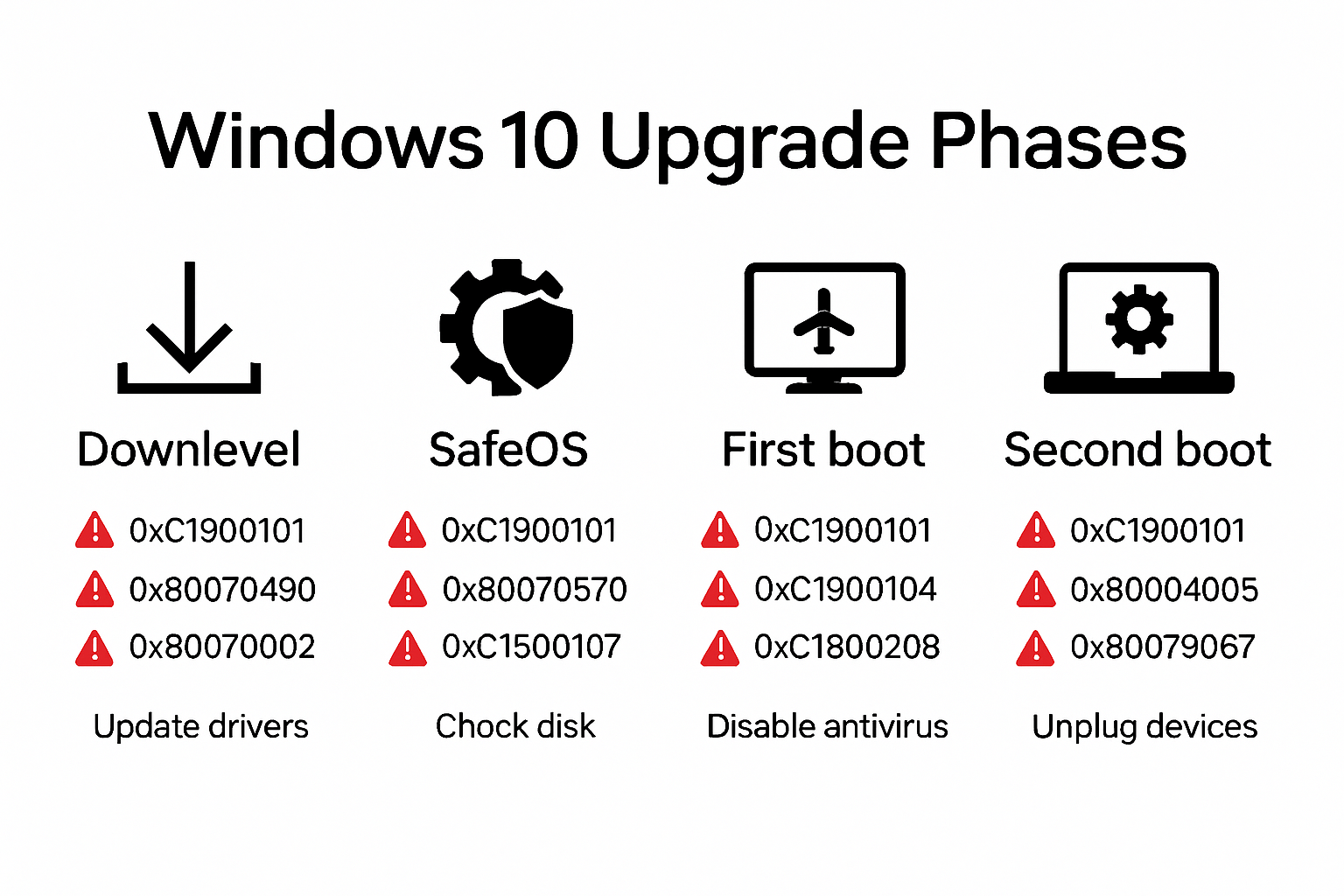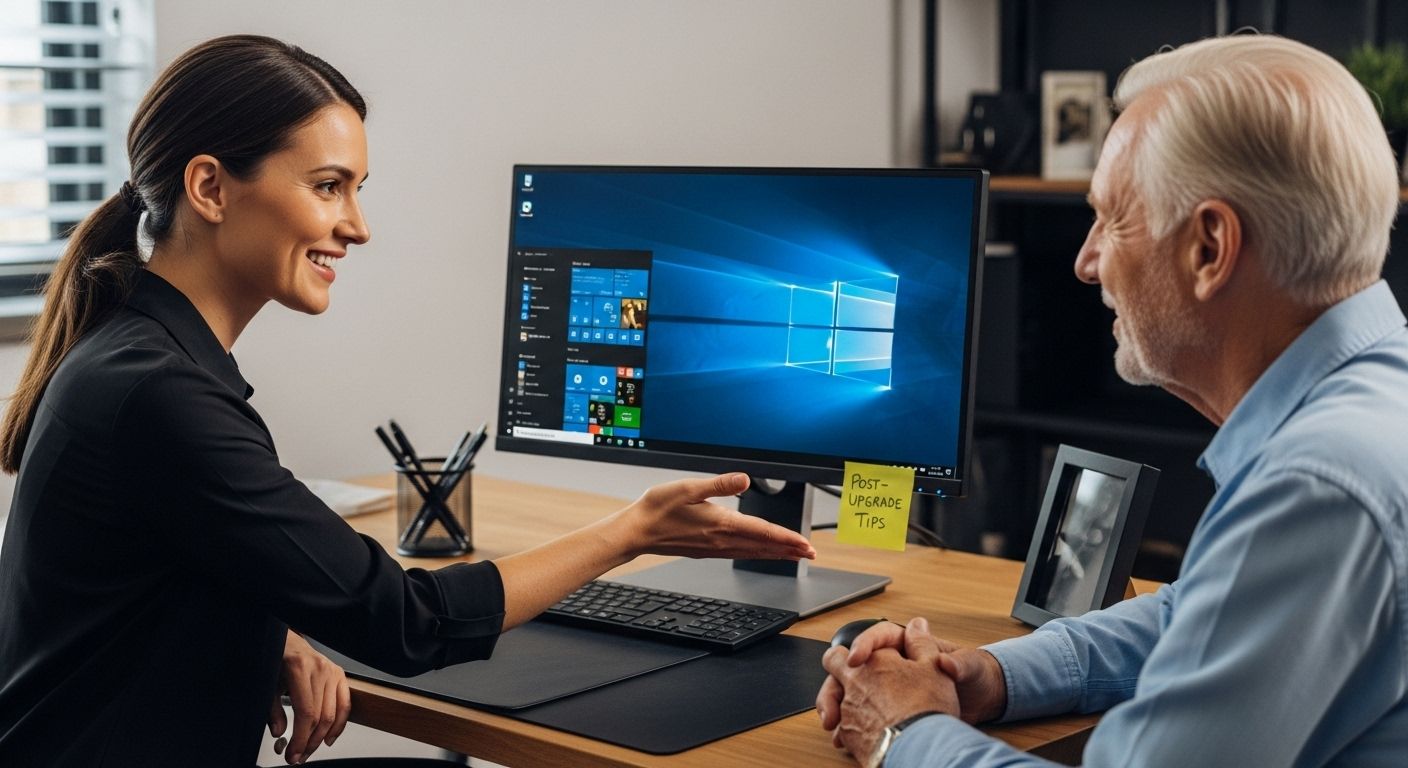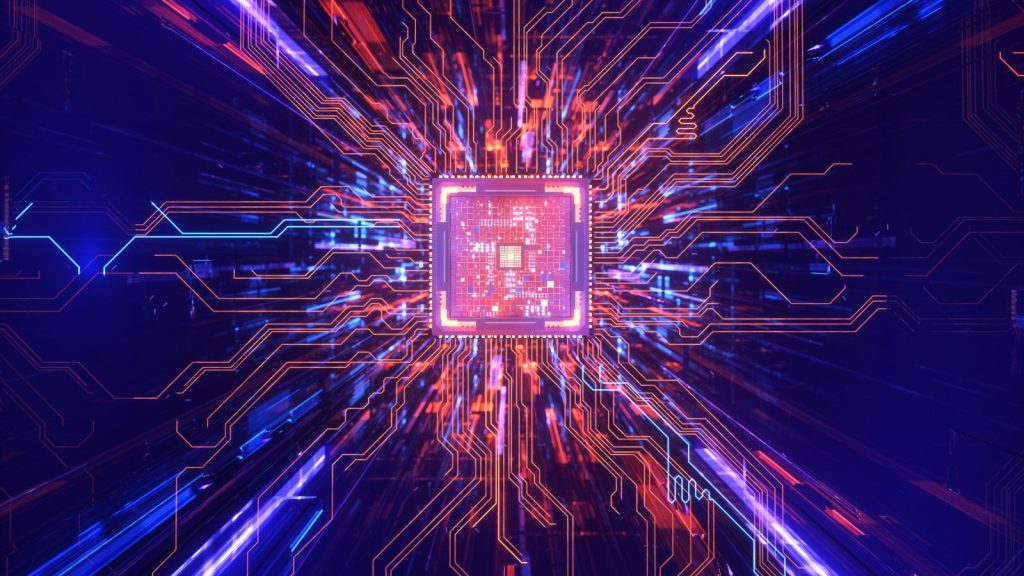How to upgrade windows 10 might seem as simple as clicking a button, and a lot of people assume it just takes a few minutes. Yet, nearly 20 percent of users lose data during Windows upgrades because they skip critical prep steps. That means the real danger is not in the installation itself, but in what happens if you rush in unprepared—your files and smooth performance could disappear in a flash.
Table of Contents
ToggleQuick Summary
| Takeaway | Explanation |
|---|---|
| Verify system requirements before upgrading | Check that your hardware meets the minimum specifications for Windows 10 to ensure compatibility and optimal performance. |
| Back up your data before starting | Create backups using external drives, cloud storage, and restore points to prevent data loss during the upgrade. |
| Use Windows Update for a smooth upgrade | Initiate the upgrade through Windows Update for automated checks on compatibility and updates, or download the installation media directly. |
| Troubleshoot common error codes effectively | Familiarize yourself with specific error codes and their solutions to quickly address issues during the upgrade process. |
| Optimize system performance post-upgrade | Implement strategies such as driver updates and system configuration adjustments to enhance performance and stability after upgrading. |
Check System Requirements and Prepare
Before upgrading Windows 10, taking the time to thoroughly check your system requirements and prepare your computer is crucial for a smooth and successful transition. Proper preparation can help you avoid potential issues, data loss, and performance problems during the upgrade process.
Verify Minimum Hardware Specifications
Ensuring your computer meets the minimum hardware requirements is the first critical step in preparing for a Windows 10 upgrade. According to the official Microsoft system requirements, your device should have at least:
To help you quickly compare the minimum hardware requirements for upgrading to Windows 10, here’s a summary table based on official Microsoft specifications mentioned in the article:
| Component | Minimum Requirement (32-bit) | Minimum Requirement (64-bit) |
|---|---|---|
| Processor | 1 GHz or faster SoC | 1 GHz or faster SoC |
| RAM | 1 GB | 2 GB |
| Storage | 16 GB | 32 GB |
| Graphics Card | DirectX 9 with WDDM 1.0 | DirectX 9 with WDDM 1.0 |
This table makes it easier to check whether your device is suitable for the upgrade at a glance.
- Processor: 1 gigahertz (GHz) or faster processor or System on a Chip (SoC)
- RAM: 1 gigabyte (GB) for 32-bit or 2 GB for 64-bit
- Storage: 16 GB for 32-bit OS or 32 GB for 64-bit OS
- Graphics Card: DirectX 9 or later with WDDM 1.0 driver
However, meeting these minimum specifications does not guarantee optimal performance. For the best experience, Indiana University IT recommends checking your device’s specific compatibility and ensuring you have more robust hardware to handle the upgrade smoothly.
Back Up Your Important Data
Data protection is paramount when performing any major system upgrade. Before initiating the Windows 10 upgrade process, create a comprehensive backup of all your important files, documents, photos, and personal data. This precautionary step ensures that even if something goes wrong during the upgrade, you will not lose critical information.
Consider using multiple backup methods:
Below is a checklist table summarizing recommended backup methods prior to a Windows 10 upgrade. You can use this list to ensure all your important data is protected before proceeding with the upgrade:
| Backup Method | Description | Completed? |
|---|---|---|
| External Hard Drive | Copy important files to an external storage device | |
| Cloud Storage | Use services like OneDrive or Google Drive for redundancy | |
| System Restore Point | Create a restore point to revert changes if needed |
Tick off each item as you complete the preparation step.
- External Hard Drive: Copy important files to an external storage device
- Cloud Storage: Use services like OneDrive or Google Drive for additional redundancy
- System Restore Point: Create a system restore point to revert changes if needed
Prepare Your System for Upgrade
Beyond hardware and data considerations, several preparatory steps can help streamline your Windows 10 upgrade:
- Uninstall unnecessary software and remove temporary files to free up system resources
- Update current device drivers to ensure compatibility with the new operating system
- Check that your antivirus and security software will be compatible with Windows 10
- Ensure a stable internet connection for downloading and installing the upgrade
- Close all running applications and save any open work before beginning the upgrade process
Learn more about our secure Windows activation keys to complete your Windows 10 upgrade with confidence.
By meticulously checking system requirements and thoroughly preparing your computer, you significantly increase the likelihood of a successful and trouble-free Windows 10 upgrade.
Step-by-Step Guide to Upgrading Windows 10
Upgrading Windows 10 requires a systematic approach to ensure a smooth and successful transition. This comprehensive guide will walk you through each critical stage of the upgrade process, helping you minimize potential complications and maximize system performance.
Initiating the Windows 10 Upgrade Process
To begin your upgrade, open the Windows Settings menu by clicking the Start button and selecting the gear icon. According to Stanford University’s IT guidelines, the first step is to verify your current Windows version and check compatibility. Navigate to the “Update & Security” section, where you can directly access the Windows upgrade tools.
Before proceeding, ensure you have:
- A stable internet connection
- Sufficient battery power or device plugged into a power source
- Approximately 6-8 GB of free storage space
- Backup of all critical data
Downloading and Installing the Upgrade
Microsoft provides two primary methods for upgrading Windows 10. The first method involves using the Windows Update feature, which automatically checks for compatible upgrades. The University of Hawaii System recommends users pay close attention to the official upgrade notifications, as they indicate system readiness.
To initiate the download:
- Click “Windows Update” in the Settings menu
- Select “Check for Updates”
- If an upgrade is available, click “Download and Install”
- Follow the on-screen prompts carefully
Alternatively, you can download the Windows 10 installation media directly from Microsoft’s website. This method provides more control over the installation process and allows for a clean installation if needed.
Post-Upgrade Configuration and Optimization
After successfully completing the upgrade, several important steps remain to ensure optimal system performance. First, allow Windows to complete all post-installation updates. These updates often include critical security patches and system improvements.
Learn more about securing your Windows installation with our comprehensive activation solutions.
Key post-upgrade tasks include:
- Updating device drivers
- Configuring system settings
- Reinstalling previously used software
- Verifying data integrity
Take time to review your system settings, adjust privacy configurations, and ensure all essential applications are functioning correctly. Some software might require reinstallation or updates to work perfectly with the new Windows version.
By following these systematic steps, you can successfully upgrade your Windows 10 system while minimizing potential disruptions and ensuring a smooth transition. Remember that patience and careful attention to detail are key to a successful upgrade experience.
Troubleshooting Common Upgrade Issues
Despite careful preparation, Windows 10 upgrades can encounter unexpected challenges. Understanding and addressing these common issues can help you navigate potential obstacles and successfully complete your system upgrade.
Identifying Upgrade Error Codes and Their Solutions
According to Microsoft’s official troubleshooting guide, Windows 10 upgrades typically involve four critical phases: Downlevel, SafeOS, First boot, and Second boot. Each phase presents unique potential error points that require specific troubleshooting approaches.

Common error codes and their potential solutions include:
For quick reference, here is a summary table of common Windows 10 upgrade error codes and their suggested solutions as outlined in the troubleshooting section:
| Error Code | Common Cause | Suggested Solution |
|---|---|---|
| 0x80070070 | Insufficient storage space | Free up disk space before upgrading |
| 0x80200056 | Download or installation interrupted | Restart upgrade, check internet connection |
| 0x8007000E | Network connectivity issues | Check network, troubleshoot connection |
This table helps identify and resolve issues that might occur during the upgrade process.
- 0x80070070: Indicates insufficient storage space
- 0x80200056: Suggests download or installation interruption
- 0x8007000E: Typically represents network connectivity issues
For each error code, the recommended first step is to:
- Check available disk space
- Verify internet connection
- Temporarily disable antivirus software
- Run Windows Update troubleshooter
Network and Compatibility Challenges
IT Pro highlights several network-related upgrade complications, emphasizing the importance of a stable internet connection and system compatibility. Common network and compatibility issues include:
- Intermittent download failures
- Incompatible device drivers
- Conflicting third-party software
- Outdated system BIOS
To mitigate these challenges:
- Update all device drivers before initiating the upgrade
- Temporarily uninstall third-party security software
- Ensure BIOS firmware is current
- Use Microsoft’s Media Creation Tool as an alternative upgrade method
Post-Upgrade Recovery and Restoration
Windows Central recommends proactive strategies for managing potential post-upgrade complications. If your upgrade encounters critical issues, consider these recovery options:
- Create a system restore point before upgrading
- Maintain a complete data backup
- Use Windows recovery tools
- Rollback to the previous Windows version if significant problems emerge
Get expert support for Windows activation to ensure a smooth transition and resolve any lingering upgrade challenges.
Remember that patience and methodical troubleshooting are key to successfully navigating Windows 10 upgrade complexities. Each error presents an opportunity to understand your system better and implement more robust upgrade strategies.
Post-Upgrade Tips for Better Performance
After successfully upgrading Windows 10, optimizing your system’s performance becomes crucial to ensure smooth operation and maximize the benefits of your new configuration. Implementing strategic performance enhancements can significantly improve your computer’s speed, responsiveness, and overall efficiency.
Optimize System Resources and Settings
According to Microsoft Support’s official guidelines, several key strategies can help enhance your system’s performance post-upgrade:
- Use Disk Cleanup to remove temporary and unnecessary files
- Manage startup programs to reduce background resource consumption
- Adjust visual effects for better performance
- Configure virtual memory settings
- Pause OneDrive synchronization during critical tasks
Disabling unnecessary visual animations and reducing background processes can free up system resources, allowing your upgraded Windows 10 to run more efficiently. Consider adjusting your power plan to “High Performance” for maximum system responsiveness.
Here is a table summarizing key post-upgrade performance optimization tasks recommended in the article. Use this as a checklist after upgrading Windows 10 to ensure your system runs smoothly:
| Optimization Task | Purpose/Benefit |
|---|---|
| Remove temporary/unnecessary files | Free up storage and improve performance |
| Manage startup programs | Reduce background load and boot times |
| Adjust visual effects | Enhance speed and resource efficiency |
| Update device drivers | Ensure compatibility and boost stability |
| Perform system/malware scans | Maintain security and optimal operations |
Following these tasks helps maintain and improve your upgraded system’s performance.
Update and Maintain Your System
EdTech Magazine recommends comprehensive system maintenance to sustain optimal performance. Critical maintenance steps include:
- Regularly update Windows and device drivers
- Install applications from the Microsoft Store for better compatibility
- Run Windows Update to ensure system security
- Check and install firmware updates for hardware components
- Perform periodic system and malware scans
Prioritize driver updates, particularly for graphics, network, and storage controllers. Updated drivers can significantly improve system stability and performance, addressing potential compatibility issues introduced during the upgrade.
Advanced Performance Optimization Techniques
The Microsoft Community Hub highlights advanced performance strategies, emphasizing the importance of hardware configuration and strategic system management:
- Consider upgrading to an SSD for faster system responsiveness
- Utilize ReadyBoost with compatible USB drives
- Manage page file size for improved memory performance
- Disable unnecessary background applications
- Create and maintain system restore points
Explore our Windows activation solutions to ensure your upgraded system remains secure and optimized.
By systematically implementing these performance optimization techniques, you can transform your recently upgraded Windows 10 system into a more responsive, efficient, and reliable computing environment. Remember that ongoing maintenance and strategic configuration are key to sustained high performance.

Frequently Asked Questions
How do I check if my computer meets the minimum system requirements for upgrading to Windows 10?
To verify your computer’s compatibility, check the minimum hardware specifications outlined by Microsoft, including the processor speed, RAM, storage, and graphics card requirements. These can be found on the official Microsoft website.
What steps should I take to back up my data before upgrading Windows 10?
It’s essential to create backups using multiple methods: copy important files to an external hard drive, use cloud storage services like OneDrive or Google Drive, and create a system restore point to revert changes if necessary.
How can I troubleshoot common upgrade issues when upgrading to Windows 10?
Familiarize yourself with common error codes and their solutions. For instance, insufficient storage may cause upgrade errors; try freeing up disk space. You can also use the Windows Update troubleshooter for other issues related to installation and downloads.
What should I do after successfully upgrading to Windows 10 to ensure optimal performance?
After upgrading, update all device drivers, adjust system settings, manage startup programs, and perform disk cleanups to improve performance. Consider adjusting visual effects and periodically checking for system updates to maintain stability.
Unlock Worry-Free Windows Upgrades With Logkeys
Upgrading your Windows 10 should be exciting, not stressful. The article showed that skipping careful preparation often leads to lost files, frustrating installation errors, or even a system that refuses to activate. Your hard work deserves a safer path. Imagine backing up your files, checking your hardware, and then feeling unsure about activation—especially if you have faced upgrade warnings or error codes that leave you worried about security or system stability.

Take control by using a genuine Windows product key from Logkeys.com to complete your upgrade smoothly. Choose from secure options for Windows 10 activation and enjoy instant delivery, affordable prices, and 24/7 expert support. Do not risk your performance or data—activate with confidence and make sure your Windows 10 upgrade is both safe and successful. Visit Logkeys.com now to secure your Windows license while support is still available.










